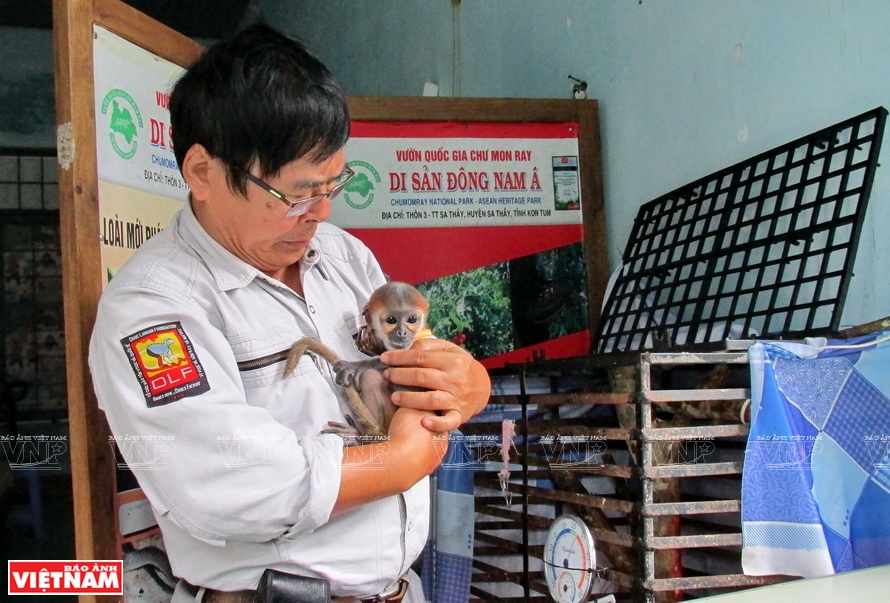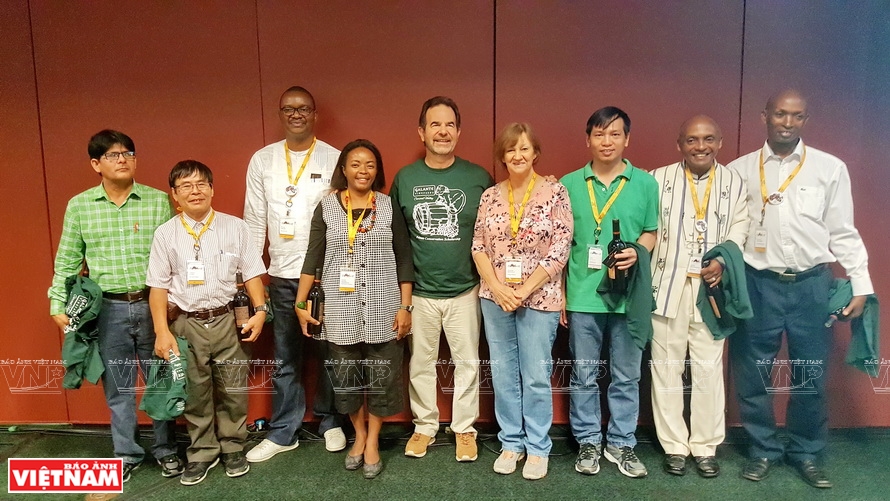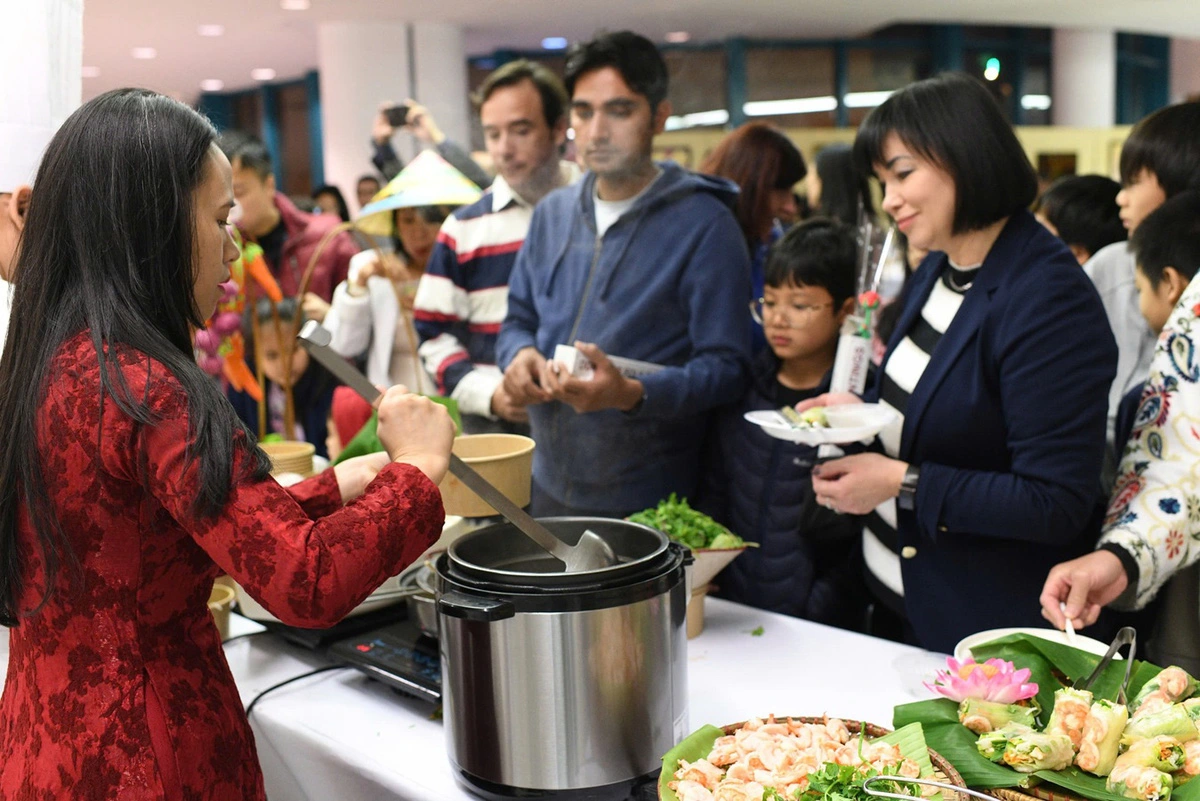Since working at the Douc Langur Foundation, he has had more time to concentrate on the study of the red-shanked douc langur on Son Tra peninsula. He flies from Hanoi to Da Nang almost every year. He even makes two to three trips a year for one week or longer to do fieldwork to collect information about this rare animal.
|
Vu Ngoc Thanh, Director of the US-based Douc Langur Foundation which operates in Vietnam. Photo: Thanh Hoa |
| The red-shanked douc langur, an endemic species of Vietnam and Laos, is considered a symbol of Da Nang. This is a rare and endangered animal species, listed in the International Union for Conservation of Nature (IUCN) and CITES’s global trade ban list. |
Through many elaborate surveys, he and his colleagues have successfully carried out many valuable research projects about images, quantity, status, food chains and even threats to the red-shanked douc langur that have been published in international scientific journals.
Thanh said that finding the langurs on Son Tra is easy but the research to conserve and develop the herd is a long and arduous task. The experts need answers to a series of questions: How many individual langurs are in Son Tra? What is their habitat? What do they eat? What is the structure of the herd? How do they breed?
 Vu Ngoc Thanh with a red-shanked douc langur rescued in Chu Mom Ray National Park, Kon Tum province, Vietnam. Photo: Files |
| Vu Ngoc Thanh is currently the director of the Douc Langur Foundation. In 2016, Vu Ngoc Thanh was awarded a conservation prize by the International Primatological Society (IPS). He also participated in the works “Vietnam fauna and Vietnam flora”, “Red book and Vietnam Red List” which were presented with the Ho Chi Minh prize in 2012. |
Thanh has always wondered how to preserve the langurs and their habitat on Son Tra peninsula. This is the most ideal habitat and also the place where the largest, most beautiful langurs in the world live. “If, in the future, langurs in other places become extinct, Son Tra will be the place where we can research and develop the herd again,” Thanh said.




